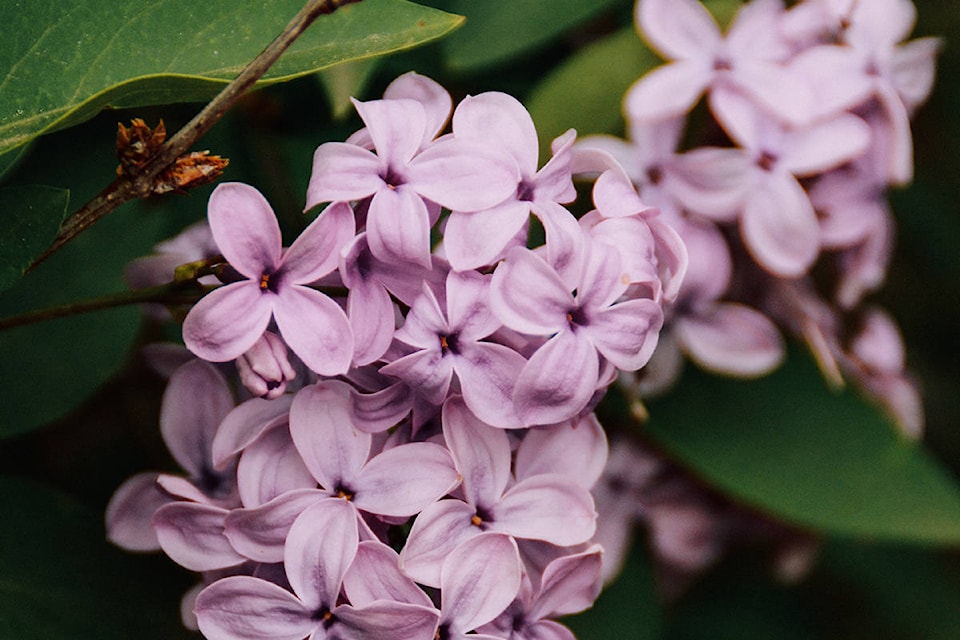By Nancy Kramer
Cloverdale Reporter
At this time of year, I am looking for lilacs. Not only because they are beautiful, but also because I have always been told that you can go and plant your annuals when the lilac is in flower. It is a sign we will not get evening frost and the soil is warm enough that the annuals will grow.
When looking for lilacs I am always impressed with the scent and the beauty of their flowers.
The most common and fragrant lilacs are Syringa vulgaris. They come in a variety of colours, from white to pink to dark purple, range in size from 5 to 15 feet in height, and have single or double flowers. S. vulgaris is extremely easy to grow. They require sun or partial sun and well-drained soil.
Like most plants, lilacs don’t like extremely wet feet as their roots will start to rot. They will need to be pruned in the spring after they flower, because they flower on last year’s wood. Prune out the dead wood, remove suckers and then prune to shape.
If you would like to propagate your lilacs, you can dig up one of the suckers that emerges. Some of the cultivated varieties are grafted onto other root stalks so the sucker that you think is a dark double purple might turn out to be a light pink single one. It will take about four to five years before the sucker is big enough to flower.
There are several other varieties of lilacs including Syringa patula or “Miss Kim” lilac, which is a dwarf variety growing up to eight feet in height and width. It blooms later than others, extending the season with deep purple buds that reveal clusters of highly fragrant, single lavender-blue flowers. The leaves are smaller in size and are burgundy-tinged in fall.
There is also the California Lilac (Ceanothus), which isn’t really a lilac at all but has similar flowers. Ceanothus thyrsiflorus, also known as the “Victoria lilac” has bright blue flowers from May to August. It is an evergreen shrub, but can be killed off if we get a severe winter. It requires full sun and, once established, is drought tolerant. It grows up to six feet in height.
Other flowering spring trees include Cercis canadensis, the Canadian Redbud. It has small pink flowers that emerge before the leaves do. The leaves are heart shaped when they open and the cultivar “Forest Pansy” has purple leaves. And of course there are the dogwood trees — the floral emblem of British Columbia.
If you’re just looking for a sign to plant your annuals, another folklore tip that I found online was “if it [is] warm enough to sit on the bare soil with no trousers on then it [is] warm enough to sow seeds.”
I think I will just look for the lilacs.
Nancy Kramer is president of the Cloverdale Garden Club. The next garden club meeting is Thursday, May 10, from 7:15—9:15 p.m. at Don Christian Recreation Centre (6220 184 Street).
